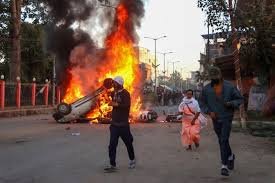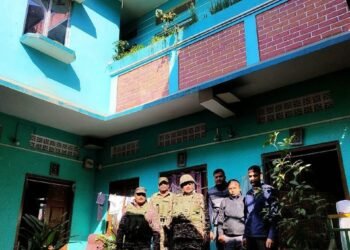Ethnic rivalries and perceived central neglect have left the region’s peace fragile, eroding trust in institutions and the sincerity of governance. A shift from Act East to Peace East is vital—true development requires reconciliation, inclusion, and justice-oriented peacebuilding.
By Janghaolun Haokip
The Northeast region of India, often described as the nation’s “unexplored paradise,” remains a
paradox—rich in cultural diversity and natural beauty, yet burdened by decades of insurgency,
ethnic strife, and political alienation. Despite its immense strategic importance as India’s gateway to
Southeast Asia, the region continues to be characterised by instability that has outlasted multiple
waves of policy interventions.
The Promise and Limits of Act East
The Government of India’s Look East Policy of the 1990s, later upgraded to the Act East Policy,
sought to harness the Northeast’s geographical position as a bridge to Southeast Asia. The vision
was to integrate the region economically through improved connectivity, trade corridors, and
infrastructure. Roads, bridges, and border trade points have since transformed the physical
landscape.
However, infrastructure alone cannot substitute for peace. While connectivity projects have
expanded, the deeper social and political fractures remain unhealed. Development, conceived
largely in material terms, has often overlooked the need for reconciliation, inclusive governance,
and trust-building. As a result, the region continues to oscillate between progress and protest,
optimism and resentment.
READ: NDA’s “Jungle Raj” Narrative Faces Credibility Crisis in Bihar
READ: “Who is the MP Named in the Satara Doctor’s Explosive Suicide Note?”
The Roots of Unrest
The persistence of conflict in the Northeast cannot be reduced merely to economic deprivation or
geographic isolation. Its roots lie in unresolved questions of identity, autonomy, and historical
injustice. Ethnic rivalries, overlapping territorial claims, and perceived neglect by central
institutions have produced an enduring sense of alienation. The result is a fragile peace, punctuated
by recurrent violence.
Moreover, while insurgent groups in the region have rightly been condemned for their violent
tactics, it is equally important to recognise that many of these movements originated from genuine
grievances — demands for dignity, representation, and justice. Over time, however, the peace
process has become increasingly politicised. During electoral cycles, the visibility and relevance of
certain factions appear to fluctuate in ways that raise questions about the neutrality and consistency
of engagement. Even unsubstantiated perceptions of political complicity weaken public trust in the
sincerity of peacebuilding initiatives.
The Need for a Policy Reorientation
India’s engagement with the Northeast thus requires a conceptual shift — from Act East to Peace
East. Economic expansion cannot flourish where communities remain divided and governance is
perceived as coercive rather than collaborative. The challenge is not merely to construct highways
and border points, but to build human confidence and institutional legitimacy.
A Peace East Policy must rest on three pillars: inclusive governance, justice-oriented
peacebuilding, and inter-community reconciliation. The region’s diversity, long seen as a
complicating factor, must be reframed as its greatest resource. Dialogue between ethnic groups,
devolution of power to local institutions, and a rights-based approach to security are crucial to
restoring trust. Equally essential is an honest review of militarisation and its social costs, ensuring
that security operations are balanced with accountability and respect for human rights.
Peace as a Precondition for Development
Development must be reconceptualised as peace-led rather than peace-dependent. Infrastructure
projects, educational reforms, and industrial growth will acquire meaning only when people can live
free from extortion, displacement, and fear. For the youth of the Northeast—who have grown up
amid uncertainty—peace is but a prerequisite for opportunity and not merely an abstract aspiration.
From Policy to People
The time has come for India to move beyond the rhetoric of connectivity and commerce towards a
model of governance grounded in compassion and coexistence. The colonial legacy of “divide and
rule” must be replaced by an ethos of “dialogue and rebuild.” The Northeast’s future lies not in
managing difference, but in transcending it through trust, justice, and partnership.
From Look East to Act East, the narrative has focused on economics and external outreach. The
next phase must focus inward—towards Peace East, where policy is guided not merely by strategy,
but by empathy. Only when peace precedes development can the Northeast truly become what it
was always meant to be: a stable frontier of opportunity and a symbol of India’s enduring unity in
diversity.
(The writer is Secy. Information & Publicity, Kuki Inpi Manipur)













